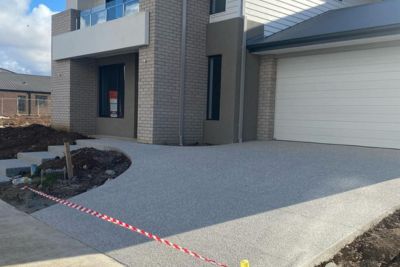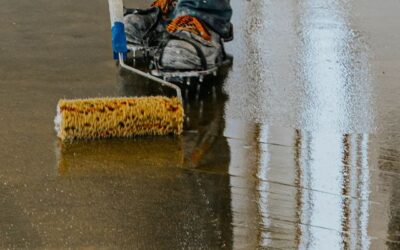If your driveway, patio, or pathway is looking worn but still structurally sound, you might be wondering, can you just pour new concrete over the old slab instead of tearing it out? The short answer is yes, but only if certain conditions are met. While this method can save time and money, it’s not always the best solution, especially if the existing concrete has cracks or an unstable foundation. In this post, we’ll break down when it’s possible to pour new concrete over old, when it’s not a good idea, and the key steps to ensure a durable result.
When is Pouring New Concrete Over Old Concrete Possible?
Pouring new concrete over old can be a great option if the existing slab is still in solid shape. This means no major cracks, sinking, or shifting that could cause the new layer to fail. If the old concrete is stable, it provides a strong base that saves time, labour, and demolition costs. Proper preparation is key. Cleaning the surface thoroughly and roughening it up ensures the new concrete bonds properly.
Good drainage is also important. If water does not pool on the existing slab and the ground underneath is stable, the new concrete will have a better chance of lasting long-term. The thickness of the new layer matters too. Anything less than two inches is at higher risk of cracking, especially in areas that handle heavy traffic like driveways. Reinforcing the new concrete with mesh or fibres can add strength, making it more durable for everyday use.
When Should You NOT Pour New Concrete Over Old Concrete?
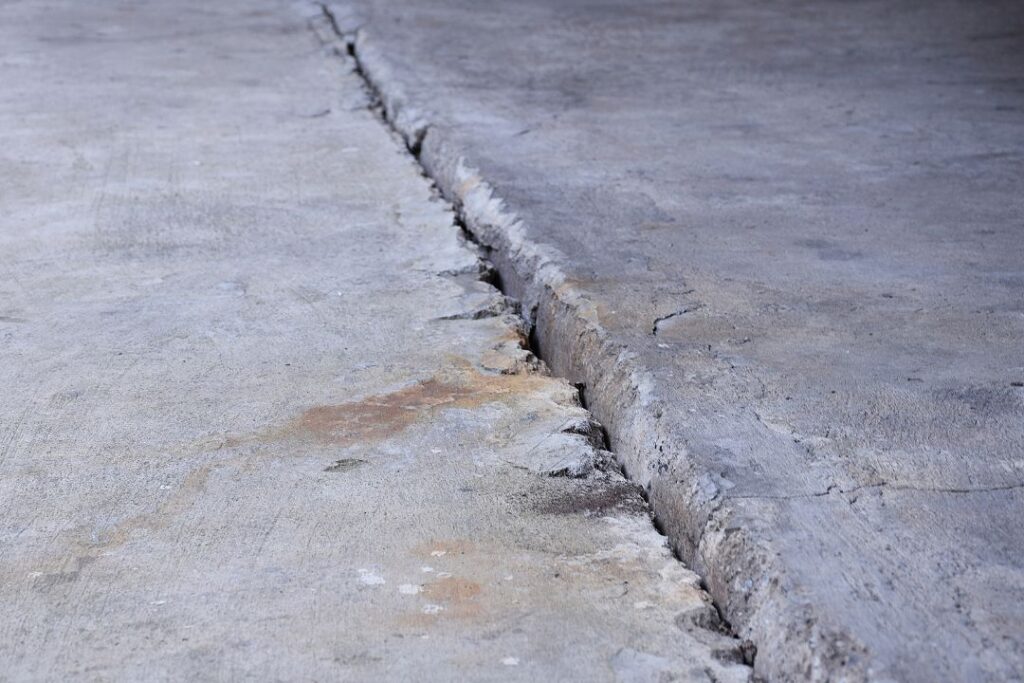
This method isn’t a good idea if the existing slab has structural issues. If there are large cracks, deep fissures, or signs of sinking, these problems will eventually show through the new layer. Instead of fixing the issue, the new concrete will just mirror the old damage, leading to the same cracks and uneven spots all over again. If the foundation beneath the slab is unstable due to poor soil conditions or ongoing movement, a fresh pour will not solve the problem. It will only be a temporary cover-up.
Drainage is another concern. If water tends to collect or pool on the existing slab, adding another layer can trap moisture underneath, leading to long-term damage like cracking and surface failure. Sealed or coated concrete is also an issue as the new layer may struggle to properly bond, increasing the risk of peeling or delamination. If the old concrete is too far gone, complete removal and replacement is the better long-term solution.
Key Considerations for a Durable Concrete Overlay
Before deciding on an overlay, it is important to weigh the costs against a full replacement. Factors like labour, materials, and the condition of your existing slab all play a role. Our post on concrete pricing breaks down these cost considerations. If an overlay makes sense for your project, here is what you need to keep in mind to ensure a long-lasting result:
Surface Preparation

Getting the surface ready is the most important step for a successful concrete overlay. Start by giving the old slab a deep clean as dirt, grease, and debris can prevent bonding. A pressure washer is a great tool to blast away grime and for stubborn stains, a degreaser and stiff-bristled brush can do the trick. Any loose or crumbling concrete should be removed to ensure the new layer has a solid base.
Once clean, the surface needs to be roughened so the new concrete can grip properly. This can be done with mechanical grinding or an etching solution. If the existing slab is too smooth, the new concrete might not adhere well, leading to cracking or separation down the line.
Using a Bonding Agent or Bond Breaker
Before pouring new concrete over old, decide whether the layers should bond or remain separate. This depends on the condition of the existing slab and expected movement.
When to Use a Bonding Agent
A bonding agent helps the new concrete adhere to the old slab, creating a single, solid structure. This is best when:
- The existing slab is stable with no major cracks or movement.
- The surface won’t experience significant shifting, like footpaths, patios, or indoor floors.
- Added strength is needed for durability.
When to Use a Bond Breaker
A bond breaker prevents the new layer from bonding, allowing independent movement. Use this method when:
- The old slab has minor cracks that could reflect through a bonded overlay.
- Soil movement or temperature changes may cause shifting.
- Heavy loads (e.g., driveways, parking areas) could stress the slab.
For a stable slab, a bonding agent is preferred. If movement is expected, a bond breaker helps prevent cracking. Choosing the right approach ensures a long-lasting concrete overlay.
Choosing the Right Concrete Mix
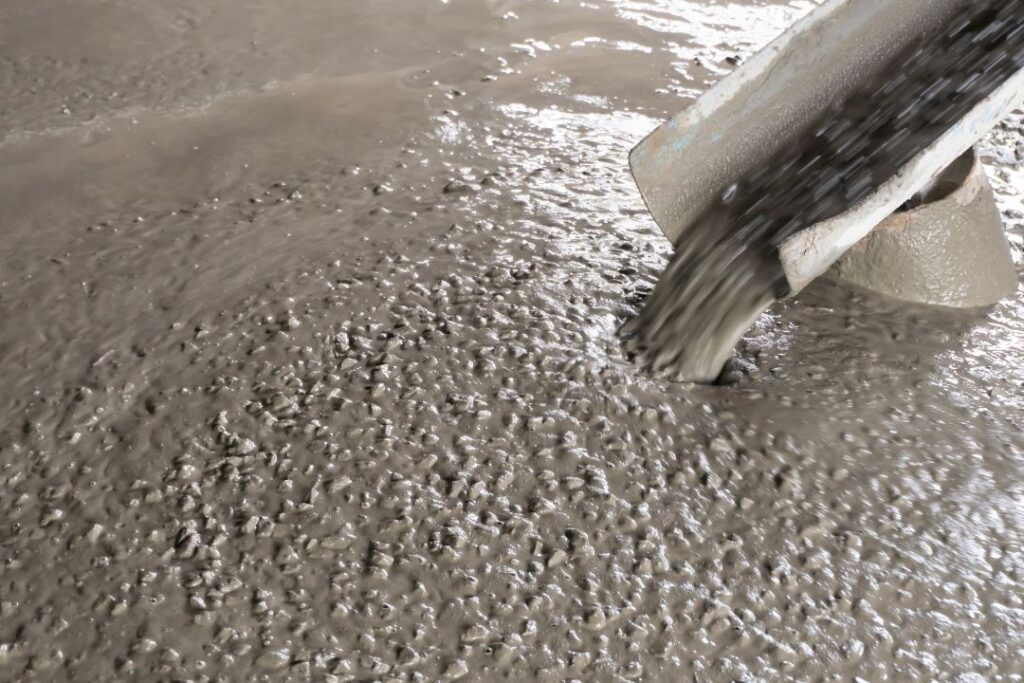
Not all concrete mixes are the same and picking the right one can make a difference in how long your overlay lasts. High-strength concrete with reinforcing fibres is a good choice for durability. If you’re applying a thin layer, a self-levelling mix can help create a smooth, even surface without the need for excessive troweling.
Cement Australia offers a range of concrete mixes suited for different applications. Their Concrete Mix is a versatile option for general projects, while the ProStrength Extra Strength Concrete Mix provides added durability for heavy-duty surfaces. In Geelong’s climate, where temperature changes can impact concrete, selecting a high-quality mix designed for strength and longevity is a smart investment.
Proper Thickness and Reinforcement
The thickness of the new concrete layer is just as important as the prep work. A layer that’s too thin or less than two inches is more prone to cracking and wear, especially in areas with frequent foot or vehicle traffic. For a more durable finish, a thicker layer is recommended. In some cases, adding rebar or wire mesh can provide extra strength.
If you’re working on a driveway or another surface that needs to handle heavy loads, reinforcing the concrete is a must. Without the right thickness or support, the new layer could crack under pressure, leading to costly repairs down the road.
Alternative Solutions
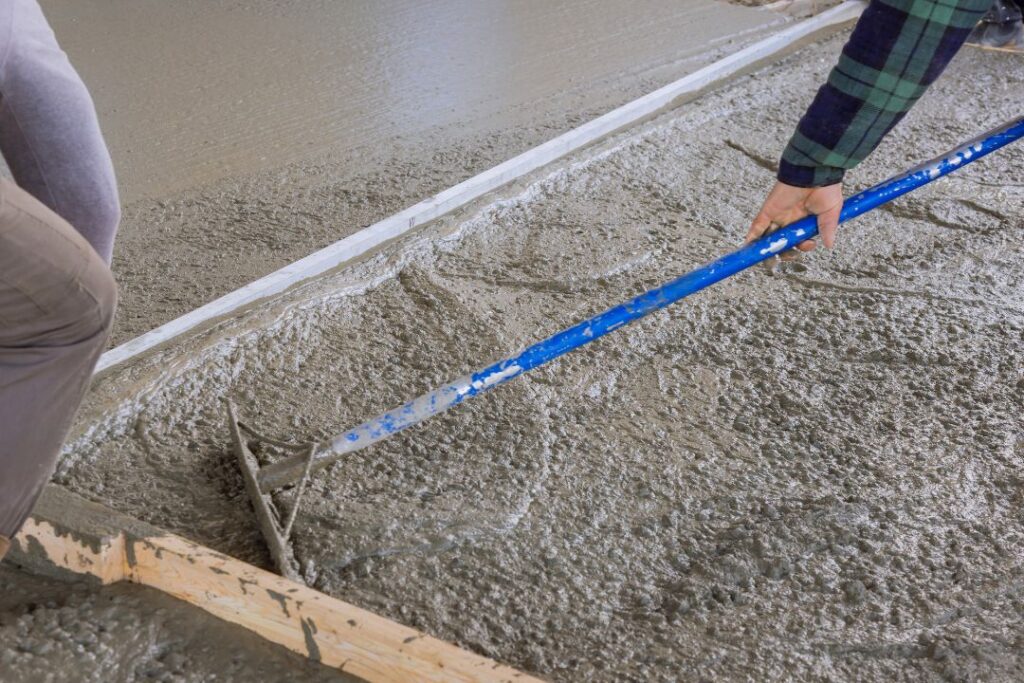
If the old concrete is too damaged for an overlay, there are other ways to refresh the surface. Concrete resurfacing is a popular option. It involves applying a thin, polymer-modified layer that improves the look of the slab without adding much thickness. This works well for minor wear and tear but it’s not a fix for major structural issues.
For concrete that is beyond saving, full removal and replacement might be the best solution. While this is more expensive upfront, it ensures a fresh, stable surface that will last much longer. Other alternatives like pavers or decorative coatings can also be considered, especially for patios and walkways where aesthetics are a priority.
Final Thoughts
Pouring new concrete over old can be a cost-effective way to give your driveway, patio, or walkway a fresh start but it only works if the existing slab is in good condition. Structural stability, proper drainage, and the right preparation are all keys to ensuring the new layer lasts. If the old concrete has major cracks, shifting, or water issues, skipping a full replacement could lead to more problems down the track. Taking the time to assess the condition of your surface will help you choose the best solution for a durable and long-lasting finish.
Not sure if an overlay is the right option for your home? Expert concreters in Geelong can assess your existing slab and recommend the best approach based on your needs. Whether you’re considering an overlay, resurfacing, or a full replacement, expert advice can save you time, money, and potential headaches in the long run. Don’t wait until small issues turn into costly repairs. Reach out today by calling (03) 5292 1455 so our team can help you make the right choice for your concrete project!

